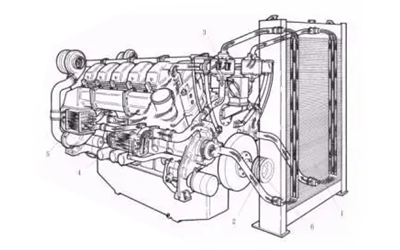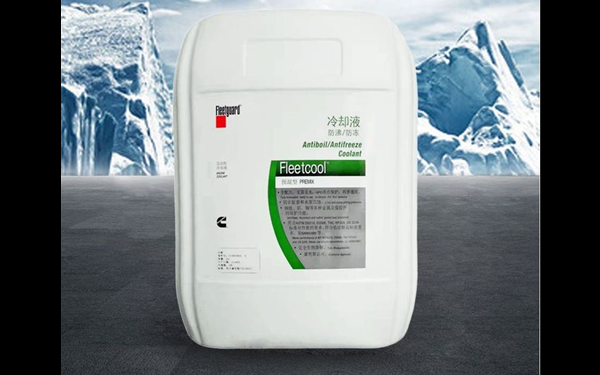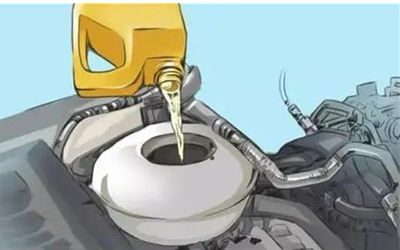Instructions for the Cooling System and Antifreeze Use of Cummins Generator Sets
Instructions for the Use of the Cooling
System
I. Cooling Methods of the Water Tank
Radiator
Cummins diesel generator sets basically
adopt a closed - loop liquid cooling method with a built - in fan. The
circulation circuit of its cooling system basically consists of the following
parts:
● Water pump;
● Water channels inside the engine cylinder
block;
● Thermostat;
● Bypass pipe between the thermostat and
the water pump;
● Water tank radiator;
● Pipes and hoses;
● Oil cooler;
● Coolant filter (available on some
models).

For non-standard generator sets, such as
generator sets with a separate water tank, the water tank radiator should be
replaced by a heat exchanger. At the same time, there are also components such
as a supplementary water tank and a remote cooling fan. If the installation
position of the remote cooling fan is relatively high, a transition water tank
should be added to prevent the heat exchanger from being damaged due to
excessive internal pressure.
Note: Various kinds of dirt adhering to the radiator chips will greatly reduce the cooling performance of the radiator. Therefore, in a dusty environment, it is very necessary to clean the radiator regularly.
II. Coolant
1. Coolant functions:
● Provide sufficient heat transfer
capacity.
● Prevent corrosion (cavitation erosion) of
all metal materials and sealing materials in the cooling system.
● Provide sufficient anti - freezing
capacity.
Friendly reminder: Users are recommended to
choose the Fleetguard coolant recommended by Cummins Inc. for better operation
of the diesel generator.

2. Selection methods
● The coolant should be a mixture of water
and antifreeze or water and rust inhibitor. Among them, the pH value of water
should be between 6 and 8. Generally, it is recommended to use pure water (distilled
water).
● In areas with freezing conditions,
antifreeze must be used in the coolant. The antifreeze capacity of this
antifreeze must meet the extreme minimum temperature of the area. Users can
select the antifreeze recommended by the engine and refer to the antifreeze
usage (preparation) instructions. Mix the antifreeze evenly in a separate
container and then add it to the water tank to ensure that the engine
antifreeze does not freeze at low temperatures.
● Selecting a qualified brand of antifreeze
recommended and approved by the engine is the key to ensuring the normal
operation of the engine. The use of antifreeze not only prevents the engine
from freezing but also raises the boiling point of the coolant at high
temperatures (the water tank is less likely to boil over).
● In areas without the risk of freezing, a
rust inhibitor can be used instead of antifreeze to achieve a better anti -
rust effect for the metal parts inside the engine water pipes without reducing
the cooling performance of the generator set. After the first filling of the
rust inhibitor, the generator set should be run until it reaches the warm - up
state to obtain the best anti - corrosion protection.
Note:The coolant
should be replaced every two years to avoid a reduction in cooling performance
due to sediment in the cooling system. Another reason for replacing the coolant
is to avoid the risk of rust in the generator set. Over time, rust can impede
the effective performance of the coolant and cause the water temperature sensor
to malfunction.
3. Coolant replacement
● When replacing the coolant, the system
should be flushed with clean water first. Make sure to continue flushing until
the water coming out is very clean.
● When draining the coolant, ensure that
the generator set is turned off and the engine body is completely cooled. Then
open the water tank filler cap. Next, open the drain plug of the water tank and
the drain plug on the engine body to drain the water. If the generator set is
equipped with a coolant filter (available on some models), remove the filter
and replace it.

4. Coolant addition
● Before adding
coolant to the coolant system, make sure that the drain plugs of the water tank
and the engine body are tightly closed.
● Do not add
coolant to the system too quickly to avoid the formation of air bubble gaps in
the system.
● Air must be
discharged through the filler opening and the exhaust valve on the engine body.
If the cooling system is connected to a heater, the heater control valve must
be opened, and ventilation inside the unit should be maintained during filling.
Note: The exhaust
valve on the engine body is generally located at the highest point of the
engine water circuit or near the thermostat and the water - temperature sensor.
You can also exhaust air by slightly loosening the water - temperature sensor,
and then tightening it after seeing coolant flowing out from there.
● When filling the
coolant, the liquid level should reach 5 cm below the welding surface of the
water tank (or the coolant level indicator scale line). Ensure that the
generator set is shut down and completely cooled before adding coolant. Do not
start the generator set until the system is ventilated and filled. After adding
the coolant, start and pre - heat the generator set. At the same time, check
the coolant level and add more if necessary. The same - specification coolant
as the original cooling system should be added to the water tank.
● For some
generator sets equipped with a coolant filter, open the filter valve (turn the
handle to the vertical position) before putting the generator set into formal
use.
III. Coolant Pre -
heater
As an optional
accessory, Cummins can provide users with two types of generator set pre -
heaters for selection. The purpose of using a pre - heater is to ensure that
the generator set can be started quickly in low - temperature conditions and
during emergencies.
These two types of
generator set pre - heaters are the AC - powered electric pre - heater and the
DC - powered fuel - fired pre - heater. Both of them heat the generator set
coolant to achieve a constant temperature (raise the temperature) of the engine
body. The difference is that the former uses AC mains power as the energy
source, while the latter uses the generator set fuel (diesel) as the heating
energy. Users can choose the appropriate heater according to the usage
environment and conditions.
The heaters
supplied with Cummins diesel generator sets have been installed and commissioned
before leaving the factory. Users only need to connect the relevant power
supply (fuel) as required to put them into operation.